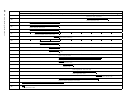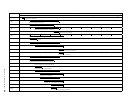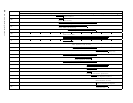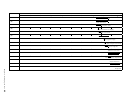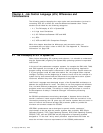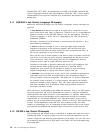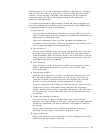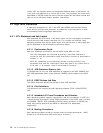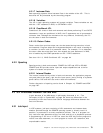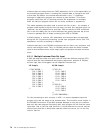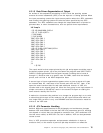OS/360 (PCP, MFT, MVT), the predecessors to MVS, and OS/390, specified Job
Control Language but when JCL was needed for BOS and TOS, a much smaller
implementation was required. Different JCL philosophies developed from this
background.
4.1.1 VSE/ESA′s Job Control Language Philosophy
Within the VSE/ESA philosophy for Job Control Language, several concepts are
required:
•
A
Job Stream
describes the concept of a single job or a sequence of jobs
which must follow each other in sequence. These will run in a single address
space or partition of the VSE/ESA system. They are delimited by ″Job Entry
Control Language″, or JECL, which is interpreted by the VSE job spooling
subsystem, POWER.
Generally, sequencing of job streams is performed by the operator or by a
job scheduling subsystem.
•
A
Job
describes the concept of one or more job steps which relate the
sequence of programs to be executed, together with the files and other
system resources those job steps require for their successful execution. A
job can be composed of one or more steps.
Each job will have a known system initial state in terms of system resources,
and at the end of the job, those resource assignments will be reset to their
initial conditions. Thus, well-formed jobs can run independently with the
exception of any input or output data files that they use.
Execution of job steps is generally sequential, but the VSE conditional JCL
facilities permit status checking and conditional or absolute GOTO
capabilities, thus a given job will be able to modify its own processing
sequence depending on results from earlier steps in that job.
•
A
Job Step
is the smallest unit of job control from a scheduling perspective.
Job steps receive the state as established by their predecessor steps, in
terms of system resource assignment. Job steps are, for practical purposes,
an instance of the execution of a single program, and specify the system
resources needed by that program. They can affect resource assignment
and state variables such as condition codes and parameter values for
successor job steps, as well.
VSE Job Control is processed as job steps are executed. That is, no VSE system
functions preprocess job control statements for syntax or resource availability
checking before the actual execution of the statements. In addition, VSE provides
for standard resource assignments and file definitions through the concepts
implemented as ″Permanent ASSGNs″ and ″Standard Labels″, which can be
used by any job or step without any specific inclusion in the JCL defining that job
or step. These capabilities make VSE JCL less complex to code, but more
complex to understand, as it is interpreted at step execution time in the context
of the permanent ASSGN and standard label environment in place at that time.
4.1.2 OS/390′s Job Control Philosophy
The concept of a job stream, that is a collection of related jobs, does not exist in
OS/390 and JES2. If a group of jobs is to flow in a particular sequence, you can
create a single new job with the same sequence of job steps. You can also use a
job scheduling product such as OPC which can control the flow and sequencing
of multiple jobs.
70 VSE to OS/390 Migration Workbook



